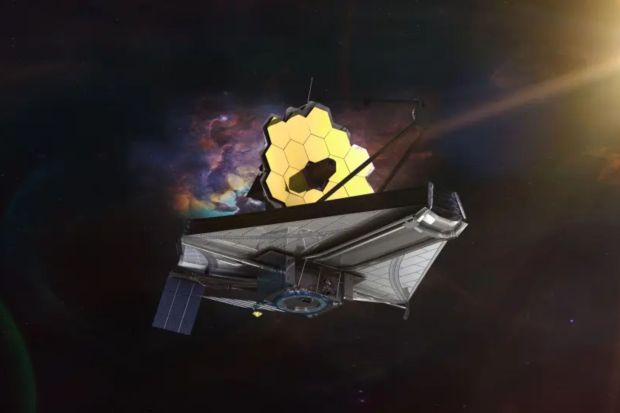Science
Scottish Scientists Discover Potential Atmosphere on Distant Planet

Researchers at the University of St Andrews in Scotland have made a significant discovery regarding the planet TRAPPIST-1e, which may possess an atmosphere capable of supporting life. This Earth-sized exoplanet is located approximately 40 light years from Earth and is part of the TRAPPIST-1 system, which orbits a red dwarf star. The findings, made using the James Webb Space Telescope (JWST), represent a crucial step in the ongoing search for habitable conditions outside our solar system.
Breakthrough Observations from the James Webb Space Telescope
The analysis of TRAPPIST-1e is part of a broader international effort to explore potentially habitable planets. The JWST, launched in December 2021, has the capability to photograph and analyze distant celestial bodies. Through its advanced instruments, researchers have begun to investigate the atmospheric conditions surrounding TRAPPIST-1e.
According to Dr. Ryan MacDonald, a lecturer in extrasolar planets at the University, TRAPPIST-1e has long been considered a prime candidate for the search for extraterrestrial atmospheres. “When our observations came down in 2023, we quickly realized that the system’s red dwarf star was contaminating our data, making the search for an atmosphere extremely challenging,” he stated. This contamination is caused by starspots, which are magnetic phenomena on the star’s surface.
To overcome these challenges, the team employed the JWST’s NIRSpec (Near-Infrared Spectrograph) instrument to observe TRAPPIST-1e as it transited in front of its star. As starlight passes through the planet’s atmosphere, any existing gases would absorb specific wavelengths of light, allowing scientists to identify the chemical composition of that atmosphere.
Potential for Life Beyond Earth
Initial results indicate several scenarios regarding the planet’s atmospheric conditions. The presence of liquid water on TRAPPIST-1e is theoretically possible, contingent upon having an atmosphere. The researchers are particularly excited about two potential explanations for their findings.
“The most exciting possibility is that TRAPPIST-1e could have a so-called secondary atmosphere containing heavy gases like nitrogen,” Dr. MacDonald explained. “However, our initial observations cannot yet rule out a bare rock with no atmosphere.”
The research team is continuing to gather additional observations using the JWST, aiming to clarify the planet’s atmospheric properties. As they accumulate data, they expect to increase the number of observations from four to nearly twenty in the coming years. This expanded dataset will enhance their ability to discern the atmospheric composition of TRAPPIST-1e.
The implications of this research extend beyond mere curiosity; they could fundamentally reshape our understanding of where life might exist in the universe. “Today marks one of the most exciting times for astronomy,” Dr. MacDonald noted, emphasizing the transformative potential of the tools now available for exploring other star systems.
As scientists delve deeper into the mysteries of TRAPPIST-1e, the hope for discovering signs of life on distant planets continues to grow, signifying a remarkable chapter in the quest for extraterrestrial existence.
-

 Health3 months ago
Health3 months agoNeurologist Warns Excessive Use of Supplements Can Harm Brain
-

 Health3 months ago
Health3 months agoFiona Phillips’ Husband Shares Heartfelt Update on Her Alzheimer’s Journey
-

 Science2 months ago
Science2 months agoBrian Cox Addresses Claims of Alien Probe in 3I/ATLAS Discovery
-

 Science2 months ago
Science2 months agoNASA Investigates Unusual Comet 3I/ATLAS; New Findings Emerge
-

 Science1 month ago
Science1 month agoScientists Examine 3I/ATLAS: Alien Artifact or Cosmic Oddity?
-

 Entertainment5 months ago
Entertainment5 months agoKerry Katona Discusses Future Baby Plans and Brian McFadden’s Wedding
-

 Science1 month ago
Science1 month agoNASA Investigates Speedy Object 3I/ATLAS, Sparking Speculation
-

 Entertainment4 months ago
Entertainment4 months agoEmmerdale Faces Tension as Dylan and April’s Lives Hang in the Balance
-

 World3 months ago
World3 months agoCole Palmer’s Cryptic Message to Kobbie Mainoo Following Loan Talks
-

 Science1 month ago
Science1 month agoNASA Scientists Explore Origins of 3I/ATLAS, a Fast-Moving Visitor
-

 Entertainment2 months ago
Entertainment2 months agoLewis Cope Addresses Accusations of Dance Training Advantage
-

 Entertainment3 months ago
Entertainment3 months agoMajor Cast Changes at Coronation Street: Exits and Returns in 2025









